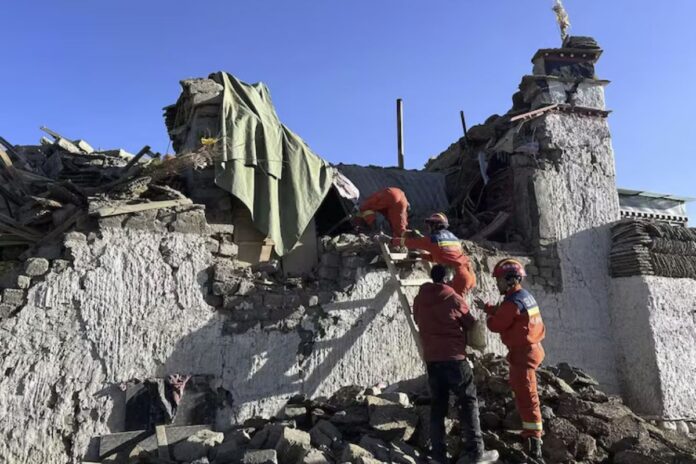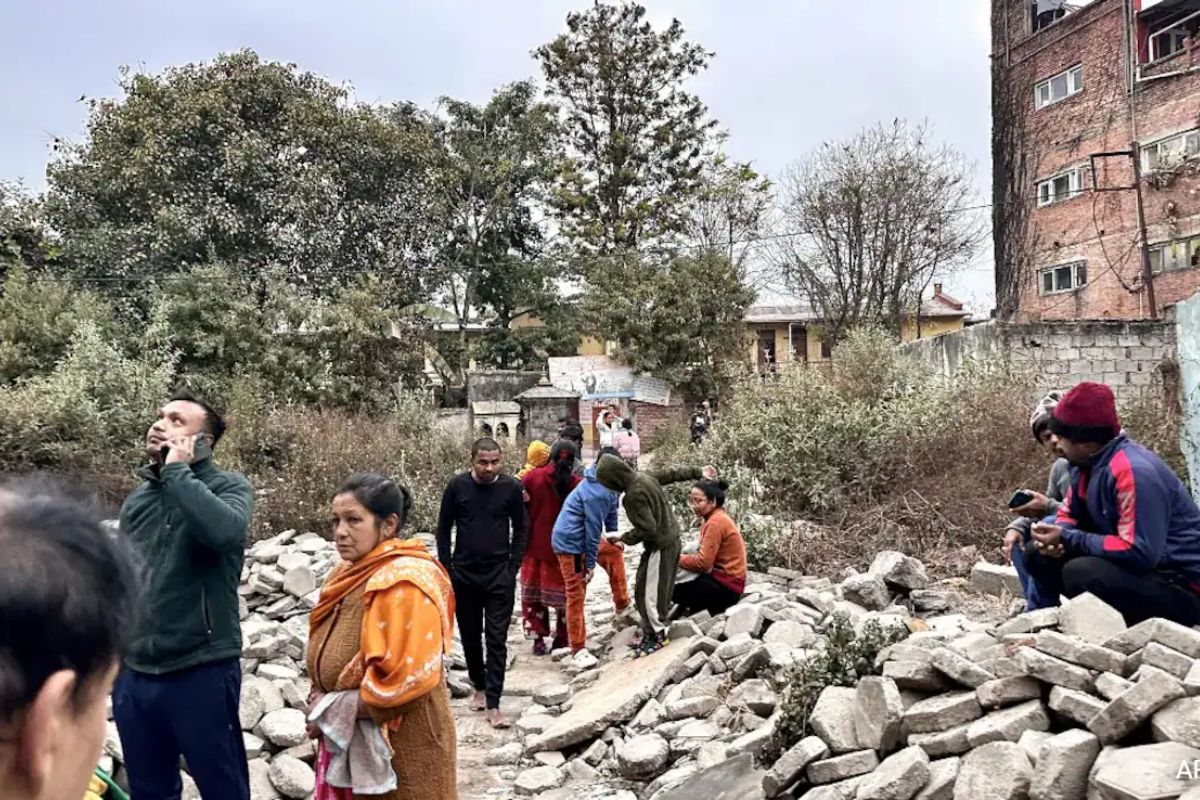The Tibet earthquake that struck on Tuesday morning caused widespread devastation, claiming at least 95 lives and leaving more than 130 people injured. Six earthquakes rocked the Shigatse region of Tibet within an hour, with the strongest one measuring 7.1 on the Richter scale. The tremors were powerful enough to be felt across multiple regions, including Delhi-NCR, Nepal, Bhutan, and various parts of North India, highlighting the far-reaching impact of this natural disaster.
Devastation in Shigatse
Shigatse, Tibet’s second-largest city with a population of 800,000, bore the brunt of the earthquake. Known as the traditional seat of the Panchen Lama, an important figure in Tibetan Buddhism, the city witnessed the collapse of numerous buildings, leaving residents homeless and the infrastructure severely damaged. Chinese state broadcaster CCTV reported that Dingri county, located near the epicenter, experienced intense tremors. “Dingri county and its surrounding areas experienced very strong tremors, and many buildings near the epicenter have collapsed,” CCTV stated. Rescue teams have been deployed to locate survivors and provide relief to those affected.
Tremors Felt Across India and Nepal
The earthquake’s impact extended beyond Tibet, with strong tremors felt across North India. Residents in Delhi-NCR, Bihar’s capital Patna, West Bengal, and northeastern states like Assam reported the shaking. The tremors caused panic as people rushed out of their homes to open areas for safety. In Nepal’s capital, Kathmandu, residents recounted their experiences of the early morning quake. Meera Adhikari, a local resident, described her ordeal: “The bed was shaking, and I thought my child was moving it. But when the windows began to rattle, I realized it was an earthquake and rushed outside with my child.”
The tremors were also felt in seven hill districts of Nepal bordering Tibet, according to the country’s disaster management authority. Bhutan and other neighboring regions also reported seismic activity, further showcasing the earthquake’s widespread impact.
Geological Activity in the Himalayan Region
The earthquake’s epicenter was identified in Xizang, near the Nepal-Tibet border, a region where the Indian and Eurasian tectonic plates collide. This collision leads to frequent seismic activity and has historically caused major earthquakes. The Himalayan region, known for its towering peaks, owes its unique geography to this geological phenomenon. Experts have classified the 7.1 magnitude earthquake as “strong,” capable of causing extensive damage in densely populated areas.
Over the past five years, Shigatse has experienced 29 earthquakes with magnitudes of 3 or higher, according to Chinese state media. However, Tuesday’s quake was significantly more powerful, making it one of the most destructive in recent history for the region. The tremors were followed by two aftershocks of 4.7 and 4.9 intensity, further unsettling the affected areas.
Historical Context of Earthquakes in the Himalayas
The Himalayan region has a long history of devastating earthquakes, attributed to the ongoing collision of tectonic plates. The 2015 Nepal earthquake, which caused nearly 9,000 deaths, remains a stark reminder of the region’s vulnerability. Such events highlight the need for preparedness and resilient infrastructure in earthquake-prone areas. Scientists have also noted that these tectonic movements are responsible for altering the heights of some of the world’s tallest peaks, underscoring the dynamic nature of the region’s geology.
Rescue and Relief Efforts
Chinese authorities have mobilized extensive rescue operations to assist in the aftermath of the earthquake. Teams are working tirelessly to locate survivors trapped under rubble and provide medical aid to the injured. Relief camps have been set up in affected areas to accommodate displaced residents. Meanwhile, India’s National Centre for Seismology and Nepal’s disaster management authorities are closely monitoring the situation to ensure safety in their respective regions.
The earthquake serves as a sobering reminder of the unpredictable power of nature. It underscores the importance of proactive disaster management strategies, especially in seismically active regions like the Himalayas. As rescue efforts continue, the focus remains on mitigating the impact of this disaster and rebuilding the affected communities.



